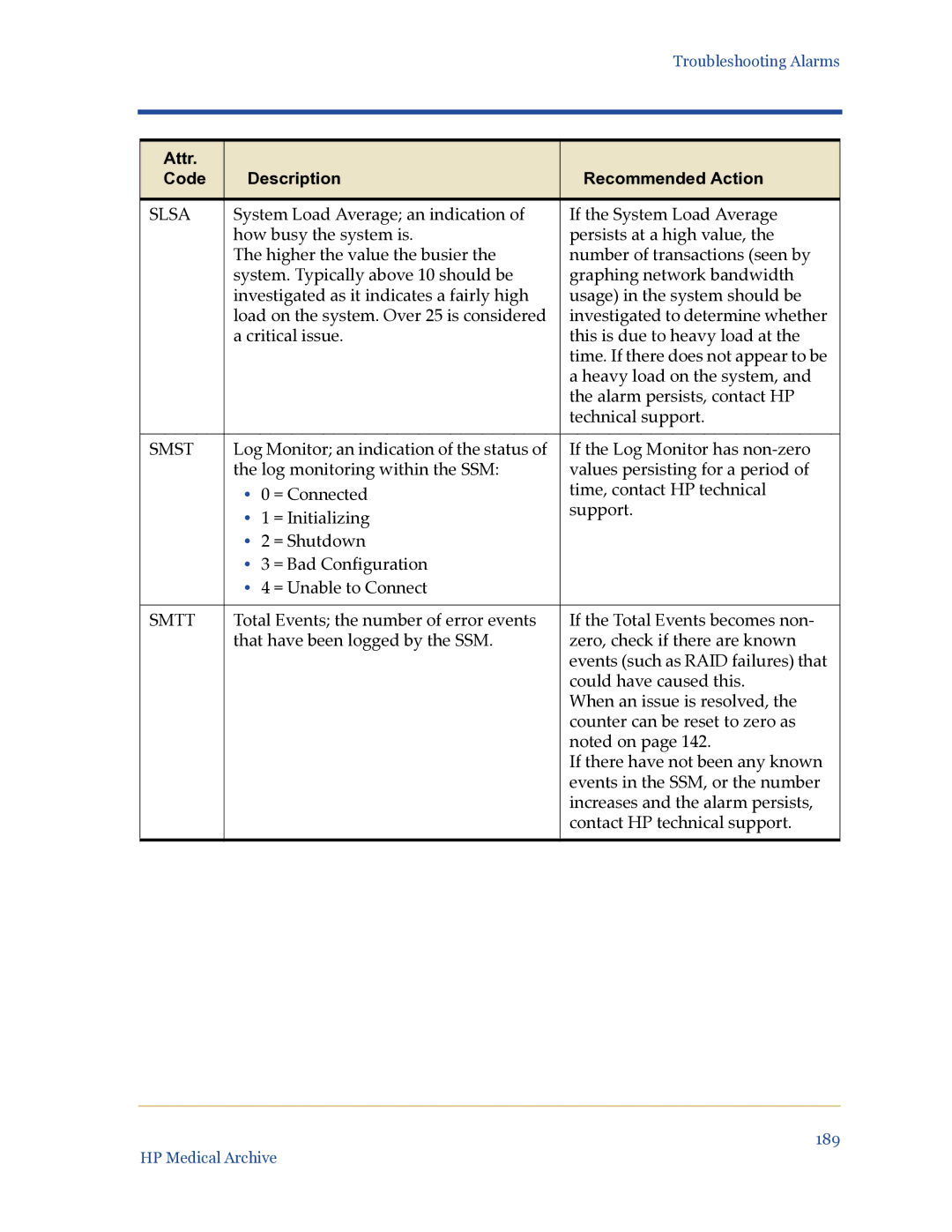
Troubleshooting Alarms
Attr. | Description | Recommended Action | |
Code | |||
|
|
| |
SLSA | System Load Average; an indication of | If the System Load Average | |
| how busy the system is. | persists at a high value, the | |
| The higher the value the busier the | number of transactions (seen by | |
| system. Typically above 10 should be | graphing network bandwidth | |
| investigated as it indicates a fairly high | usage) in the system should be | |
| load on the system. Over 25 is considered | investigated to determine whether | |
| a critical issue. | this is due to heavy load at the | |
|
|
| time. If there does not appear to be |
|
|
| a heavy load on the system, and |
|
|
| the alarm persists, contact HP |
|
|
| technical support. |
|
|
| |
SMST | Log Monitor; an indication of the status of | If the Log Monitor has | |
| the log monitoring within the SSM: | values persisting for a period of | |
| • | 0 = Connected | time, contact HP technical |
| • | 1 = Initializing | support. |
|
| ||
| • | 2 = Shutdown |
|
| • 3 = Bad Configuration |
| |
| • 4 = Unable to Connect |
| |
|
|
| |
SMTT | Total Events; the number of error events | If the Total Events becomes non- | |
| that have been logged by the SSM. | zero, check if there are known | |
|
|
| events (such as RAID failures) that |
|
|
| could have caused this. |
|
|
| When an issue is resolved, the |
|
|
| counter can be reset to zero as |
|
|
| noted on page 142. |
|
|
| If there have not been any known |
|
|
| events in the SSM, or the number |
|
|
| increases and the alarm persists, |
|
|
| contact HP technical support. |
|
|
|
|
189
HP Medical Archive
